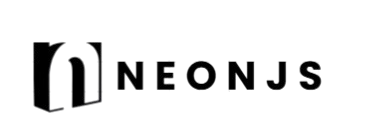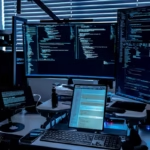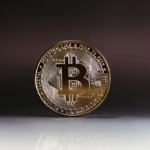In today’s digital world, every device connected to the internet has a unique identity known as an IP address. Think of it as a digital fingerprint or an address that helps computers find and communicate with each other. Among countless IP addresses, 185.63.253.2001 stands out as an interesting subject to explore. Whether you’re a casual internet user, a tech enthusiast, or someone working in cybersecurity, understanding this IP address can provide insights into how the internet operates, and what risks or opportunities might be linked to it.
Let’s dive into the story behind 185.63.253.2001, uncover its role, and discuss important factors you should be aware of.
What Exactly Is 185.63.253.2001?
IP addresses come in two main versions: IPv4 and IPv6. IPv4 addresses are formatted as four groups of numbers separated by dots (like 192.168.1.1). IPv6 addresses, on the other hand, are longer, made of eight groups of hexadecimal characters separated by colons (like 2001:0db8:85a3:0000:0000:8a2e:0370:7334).
At first glance, 185.63.253.2001 looks like it might be an IP address, but it does not match the proper format for either IPv4 or IPv6. This raises the question: is it a valid IP address or something else? It’s likely a typo or a misformatted version of an IP address or perhaps an identifier used in a specific context like networking logs or custom systems.
Why Format Matters in IP Addresses
Correct formatting of IP addresses is crucial because it ensures devices can identify each other without confusion. The common IPv4 format uses four numbers ranging from 0 to 255, while IPv6 uses a more complex hexadecimal system allowing many more unique addresses.
Incorrect IP formats, such as 185.63.253.2001, can cause network errors, failed connections, or even security concerns, as they might be interpreted incorrectly by routers and servers.
Possible Origins of 185.63.253.2001
Given its odd format, there are a few possibilities behind 185.63.253.2001:
Typographical Error: It may be someone accidentally added an extra digit or misplaced a dot.
Custom Identifier: Some organizations or systems use unique codes for internal referencing, which might look like an IP but are not intended for public networks.
Malformed IP: Sometimes, IP addresses get logged incorrectly during network scans or error reports.
It’s essential to validate IPs before using them in any technical or security setting to avoid confusion.
Where Does the 185.63.253 Range Usually Appear?
The portion 185.63.253.x fits within a real IPv4 block commonly assigned to certain regions or organizations. The “185.63.253” subnet is part of a range often allocated to internet service providers or data centers, especially in Europe and Russia.
Such IP blocks are typically used by:
Web hosting services
VPN providers
Data centers
Corporate networks
Knowing the general location or ownership of an IP block can be helpful in tracing network activity or detecting suspicious traffic.
How to Check the Ownership of an IP Address
For valid IP addresses, you can perform a WHOIS lookup to find out who owns the address block and where it’s registered. This information helps in:
Identifying if traffic from the IP is trustworthy
Tracing cyberattacks or spam sources
Geolocating the IP to a specific country or city
Since 185.63.253.2001 is not a valid IP, a WHOIS query would not return meaningful data, but checking the 185.63.253.x range can provide clues.
Security Considerations Around IP Addresses Like 185.63.253.x
The internet is full of both helpful and harmful actors. IP addresses play a big role in identifying sources of traffic, including potential threats like hacking attempts, phishing, or spam.
If you ever encounter an IP similar to 185.63.253.2001 in your network logs, be cautious:
Verify its validity and origin
Watch for repeated connection attempts or suspicious patterns
Use firewalls or security tools to monitor or block if needed
Incorrect or suspicious IP formats can sometimes be a sign of spoofing or malicious activity.
Can You Use 185.63.253.2001?
Since 185.63.253.2001 does not follow standard IP conventions, it’s not usable as a direct address for networking purposes. However, understanding its components can help you spot errors or malicious attempts.
For example, if this IP appeared in an email header, a firewall log, or system report, it might signal a data entry mistake or an attempt to confuse automated systems.
How to Properly Validate IP Addresses
To avoid issues:
Use IP validation tools online or built into your system software
Remember IPv4 is always four sets of numbers (0-255) separated by dots
IPv6 uses colons and hexadecimal digits with a specific structure
Any deviation often means the IP is malformed or invalid
Correct validation prevents connection failures and helps maintain network integrity.
The Role of IP Addresses in Modern Networks
Every device on the internet relies on IP addresses to send and receive data. Without them, the digital world would be chaos, with no way to know where information should go.
IP addresses like the 185.63.253.x series are fundamental building blocks, connecting users, servers, and services worldwide. Understanding even malformed addresses like 185.63.253.2001 can sharpen your awareness of how networks communicate.
Conclusion
While 185.63.253.2001 itself might not be a valid or usable IP, exploring it reveals important lessons about IP address formats, network communication, and cybersecurity best practices.
Always ensure IP addresses you interact with are correctly formatted and verified. Stay vigilant for suspicious or malformed entries in your network logs, as they might hint at errors or threats. Learning about such topics strengthens your digital literacy and safeguards your online activities.
Frequently Asked Questions (FAQs)
1. Is 185.63.253.2001 a valid IP address?
No, it does not follow the proper format of either IPv4 or IPv6 addresses.
2. What does the 185.63.253 range represent?
It is a subnet often assigned to ISPs and data centers, primarily in Europe.
3. How can I check who owns an IP address?
You can use WHOIS lookup tools to find the owner and location of valid IP addresses.
4. Can malformed IP addresses cause security issues?
Yes, they may indicate errors or attempts to bypass security filters.
5. How do I verify if an IP address is valid?
Use IP validation tools or ensure it fits standard IPv4 or IPv6 formatting rules.
6. What should I do if I see a suspicious IP like 185.63.253.2001 in my logs?
Investigate the source, validate the address, and consider blocking it if it appears harmful.






